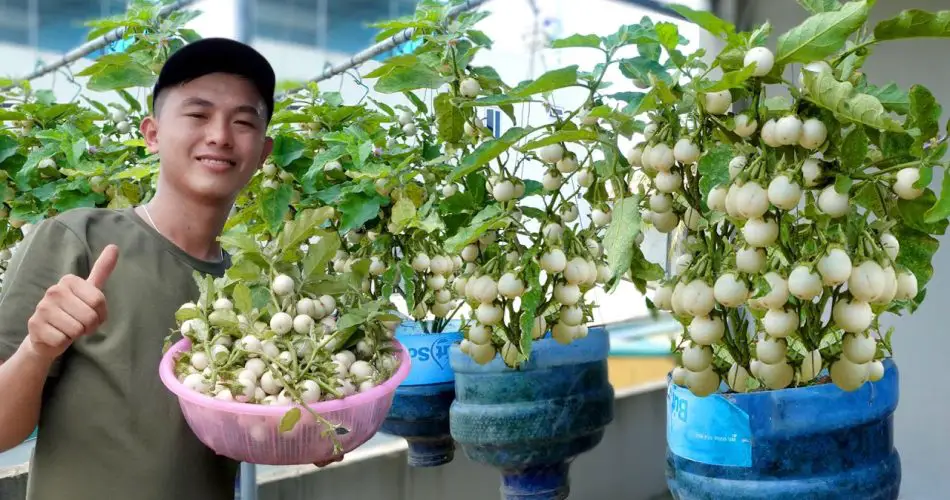Growing delicious and crispy eggplants without a traditional garden is possible through container gardening or other compact methods. Here’s a guide to help you achieve a high yield of crispy eggplants with minimal space:
1. Select Compact Eggplant Varieties:
- Choose compact or dwarf eggplant varieties that are well-suited for container gardening. Examples include “Patio Baby,” “Slim Jim,” or “Ichiban.”
2. Container Selection:
- Use large containers with good drainage. A 5-gallon container per plant is a good starting point. Ensure each container has drainage holes at the bottom.
3. Quality Potting Mix:
- Use a well-draining potting mix enriched with organic matter. Eggplants prefer slightly acidic to neutral soil (pH around 6.0 to 7.0).
4. Indoor or Balcony Gardening:
- Eggplants can be grown on balconies, patios, or even windowsills. Choose a sunny location that receives at least 6-8 hours of sunlight daily.
5. Start from Seeds or Seedlings:
- You can start eggplants from seeds indoors about 8-10 weeks before the last expected frost, or purchase healthy seedlings from a local nursery.
6. Planting:
- If starting from seeds, transplant the seedlings into containers once they are a few inches tall. Plant one eggplant per container. If using seedlings, transplant them carefully into the containers.
7. Sunlight:
- Ensure your eggplants receive plenty of sunlight. If you’re growing them indoors, use grow lights to supplement natural light.
8. Watering:
- Keep the soil consistently moist but not waterlogged. Water the plants at the base to avoid wetting the foliage, which can lead to diseases.
9. Fertilization:
- Fertilize the eggplants with a balanced, all-purpose fertilizer. Follow the recommended application rates on the fertilizer packaging. Container-grown plants may need more frequent feeding than those in the ground.
10. Support for Heavy Fruits: – Eggplants can produce heavy fruits, so providing support can prevent branches from bending or breaking. Use stakes or small cages to support the plants.
11. Pruning: – Encourage bushier growth and better air circulation by pruning the eggplant plants. Pinch off the tips of the main stems when the plants are about a foot tall.
12. Pest Management: – Keep an eye out for common eggplant pests such as aphids and spider mites. Use natural remedies or insecticidal soap to manage pest issues.
13. Harvesting: – Harvest the eggplants when they are young and glossy. Use a sharp knife or scissors to cut the eggplants from the plant. Regular harvesting promotes continuous fruit production.
14. Companion Planting: – Consider companion planting with herbs like basil or marigolds to deter pests and enhance the flavor of your eggplants.
15. Successive Planting: – If you have space, consider successive planting every few weeks to extend the harvest period and ensure a continuous supply of fresh eggplants.
By following these tips, you can grow delicious and crispy eggplants even without a traditional garden. Enjoy the satisfaction of harvesting your own homegrown eggplants and incorporating them into your favorite dishes.



